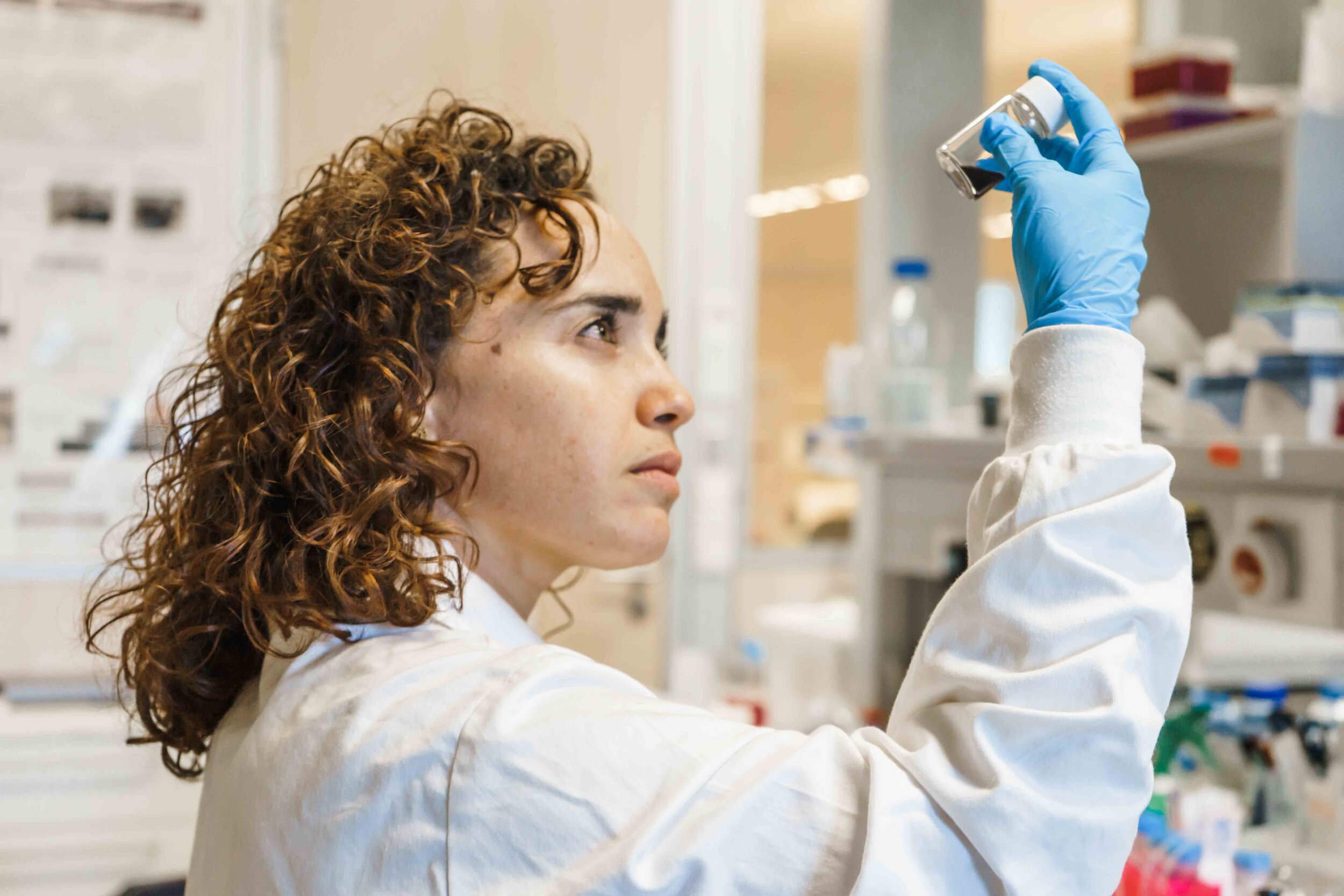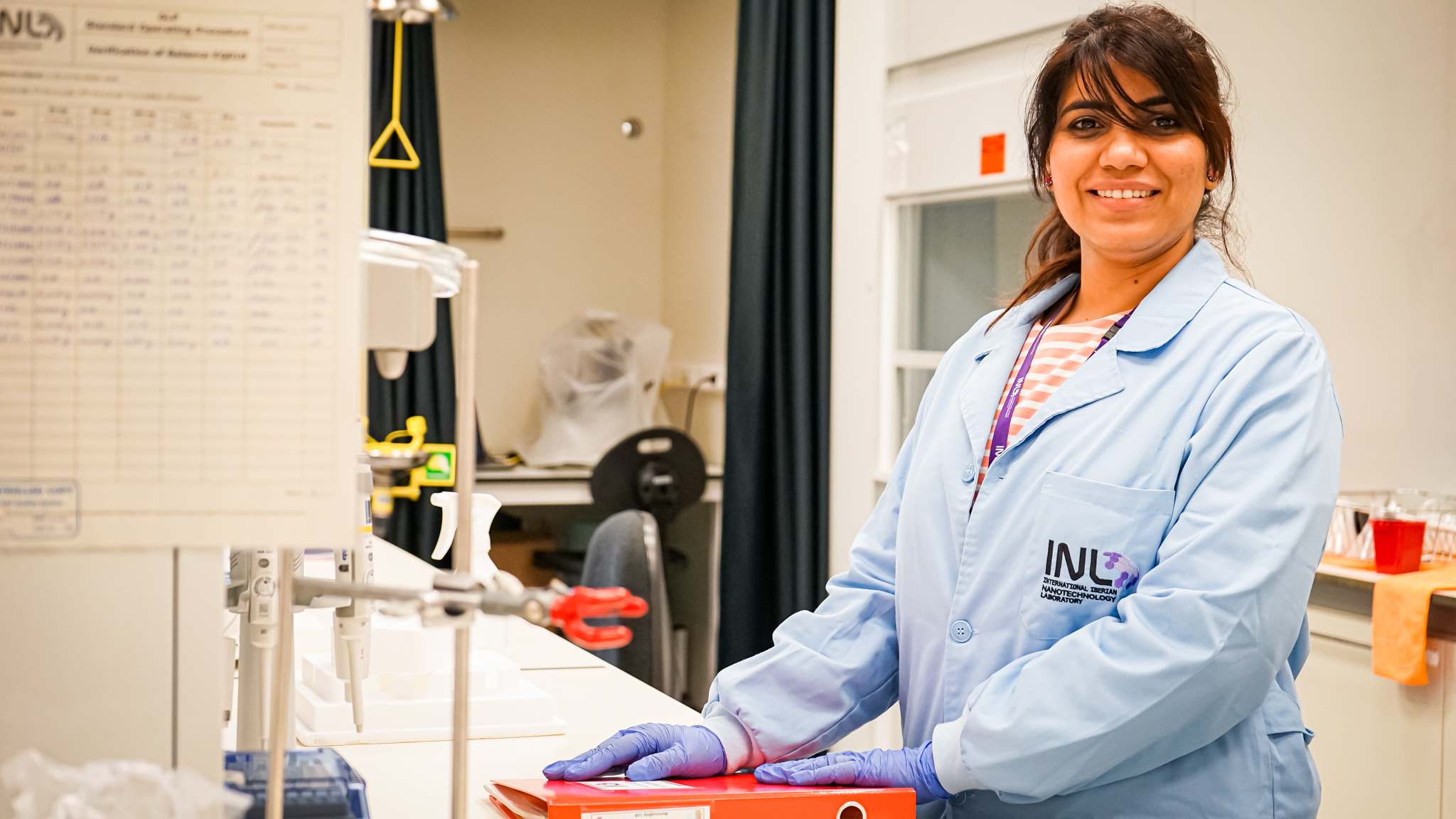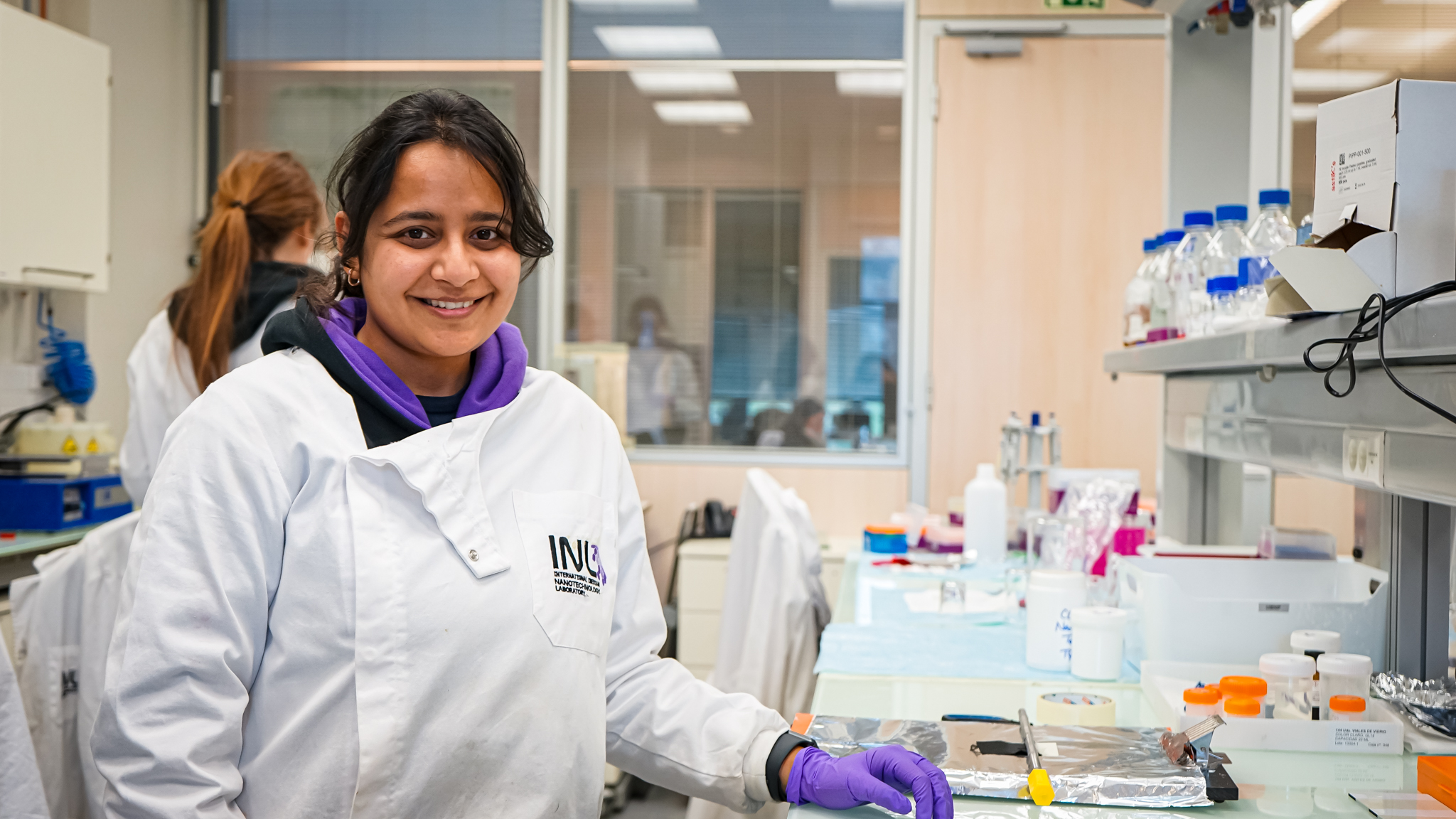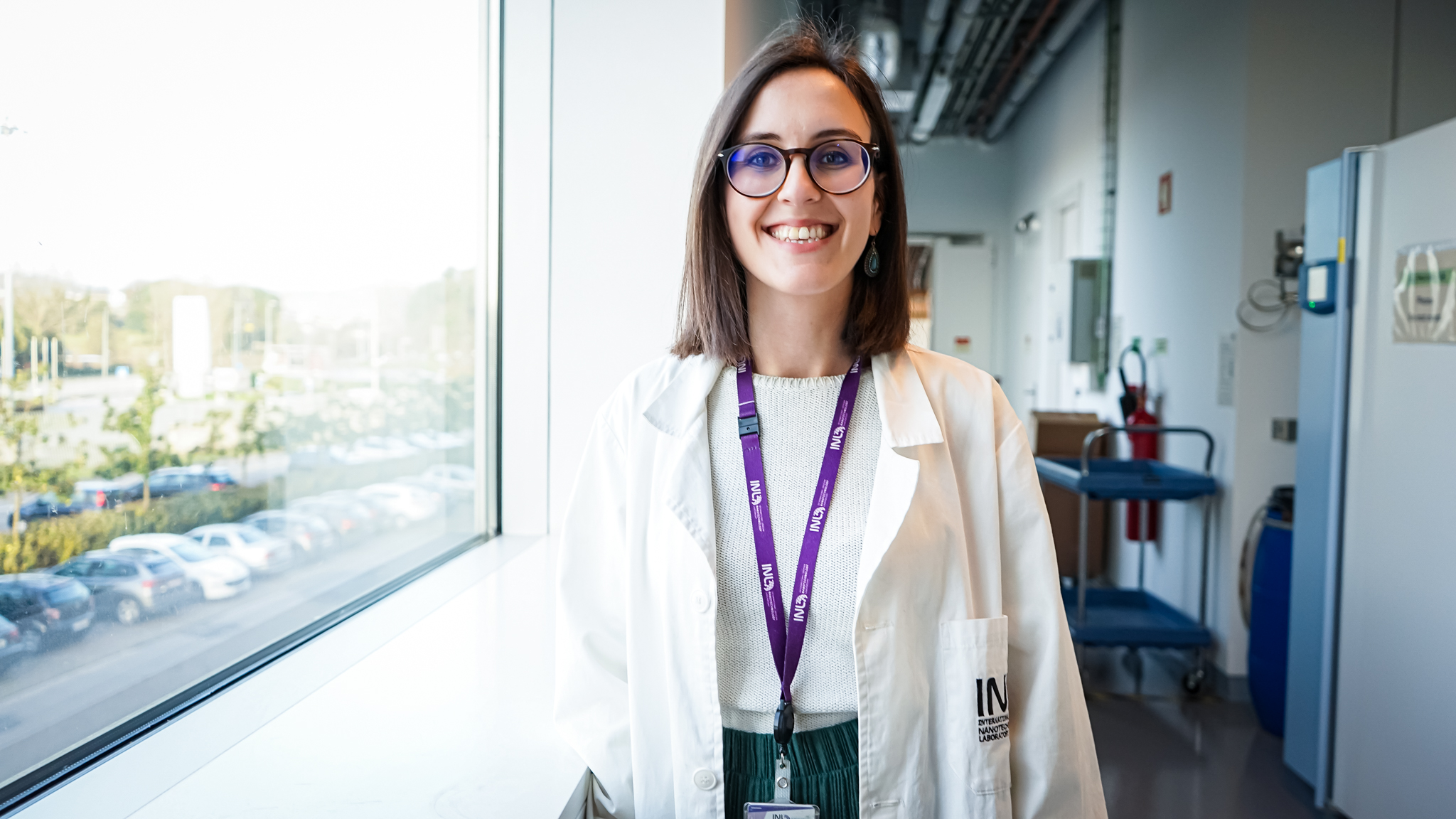
“The utopia of curing lives”, interview with Sara Abalde-Cela
October 15, 2020
Sara Abalde-Cela is a Staff Researcher at INL. She works at the Department of Life Sciences, within the Medical Devices group. The research project she is involved in focuses on the development of microfluidic platforms for the detection of cancer cells, as a continuation of her Marie Curie project (2017-2019). The goal of her project is to develop a real-time and on-chip method for circulating tumour cell detection based on Surface enhanced-Raman scattering (SERS) spectroscopy.
Can you tell us what you are working on at present?
I am now currently developing a research line based on the combination of plasmonic nanoparticles and microfluidics to create novel platforms to diagnose, monitor and understand cancer. Based on my former experience in a very sensitive detection technique, surface-enhanced Raman scattering spectroscopy (SERS) during my PhD in Vigo (Spain) and my background in microfluidics at the University of Cambridge (UK) I have come to understand that by taking advantage of the assets offered by both we can advance beyond the state of the art in biosensing. I am particularly interested in exploring the role of single-cells in cancer development, to pinpoint those cells that are more aggressive and try to understand the mechanisms that drive those cells to kick-off the metastatic cascade. We are currently involved in a plethora of projects that range from skin implants to monitor cancer metabolites and single-cell proliferation in microdroplets to the diagnosis of point mutations in POC devices or analysis of body fluids of cancer patients.
Why did you decide to work in the Medical Devices area?
As a child, I wanted to be a medical doctor. And, as every little child interested in medicine, I lived in the utopia of wanting to cure lives. Though, I turned into a chemist by background, with the aim of using this knowledge to understand things and create solutions. I have always been amazed by how nature has put together all the Lego pieces to create all sorts of alive entities, especially humans. Also, I like contributing to society and to the general knowledge in science applied to the healthcare sector. However, me ending at the Medical Devices group was also a bit of role of chance, combined with an exercise of patience and resilience until I got to apply my scientific knowledge to my targeted area of interest. When I was finishing my bachelor I had an internship at the Organic Chemistry lab, which as an undergrad in Chemistry I thought it would be the closest discipline to medicine in this field. It was a complete disappointment though, and I moved to the physical chemistry lab to do my PhD in nanotechnology. It was then when I discovered the potential of technology as a whole. I would define myself now as a dedicated technologist. My developments during the PhD were all in the fundamental science side of things, but quite insightful in terms of the power of nanotechnology. After, I moved to a postdoc in which I found one of my other passions: microdroplets. Microdroplets are fun, much much fun! They are like tiny microbubbles in where you can do all sorts of reactions to understand how tiny things work and interact with each other. It was back then when I realised that the combination of my expertise could have a real impact in the medical area, which was my target from the beginning. And it was finally then when I felt ready to join INL in a project fully dedicated to cancer. Since joining INL back in 2017 I have been expanding and pursuing the research lines of my interest supported by an amazingly dedicated group of people in the Medical Devices group and in the Microfluidics Lab.
How do you see the development of microfluidic platforms?
My first contact with microfluidics was in my first visiting exchange during the PhD in 2009 to the Microdroplets group in Cambridge (UK). It was only a few years back when worldwide scientific leaders like George Whitesides started to publish and speak about microfluidics. So, I was lucky enough to be involved in one of the pioneering research groups of microfluidics in Europe. The development of microfluidics in the last decade rose steeply and it is one of the leading markets in technology applied to the healthcare sector. I would say that with microfluidics all is possible. We can miniaturise so we save energy and resources – aligned with the Green Deal European focus – we can streamline processes and do things extremely fast – we save time which is worth money-, and we can have extremely fine control over the things we are doing inside the chip. I would say that microfluidics is being and will be one of the most influential technologies for the development of platforms for point-of-care devices. Also, all the hype around organ-on-a-chip places microfluidics at the forefront of the technologies of the decade, and we hope the hype to become a reality!
How would you explain the importance of your work area to a non-scientific person?
That is an easy job because working in cancer means we have half of the job done. Unfortunately, we have all known people, friends and family that were affected by cancer. In this sense, it is easy to get people´s attention. I tend to be quite generic when I speak to a person that has a non-scientific background. I like to say that we use very tiny particles (or balls depending on the educational and age level of the audience) to see if a person has cancer, and if it has cancer if the therapy is working, and if the therapy is working to make sure that this person remains cancer-free after being considered cured. This would be the most practical part of my work, the most applied one, and the easiest to explain. It is way more difficult when we try to explain the importance of the more fundamental developments. For example, when I explain that I am studying single-cells and their functional impact in different diseases, I like to use the sibling comparison. If two siblings are not the same and have different behaviours, because they have been originated from different individual cells, then the individual cells that may or may not undergo cancer development are also different. What if we could know from the beginning if one of the siblings is going to be the naughty one? What if we could know from the beginning which cells are going to be responsible for cancer development? This is obviously a very naïve and simplistic explanation, but something that our non-scientific audiences relate to easily.
What inspires you and excites you about science?
The look of an atom at the electron microscope, “sightseeing” cells from a patient at the microfluidic chip, the peak at the spectrum that means yes or no to a disease, to a protein, to a nucleic acid or to a molecule. The continuous exchange of ideas, the intellectual challenge and motivation, the first-hand access to groundbreaking developments and information before it reaches society. It also excites me seeing how a student evolves, how we can transfer knowledge and motivate new generations, and also how we can keep learning from people more senior than us. The exchange and the exposure to different cultures, different mindsets and different ways of being. After all, who would not want to be at the first row in the theatre of scientific discoveries?






